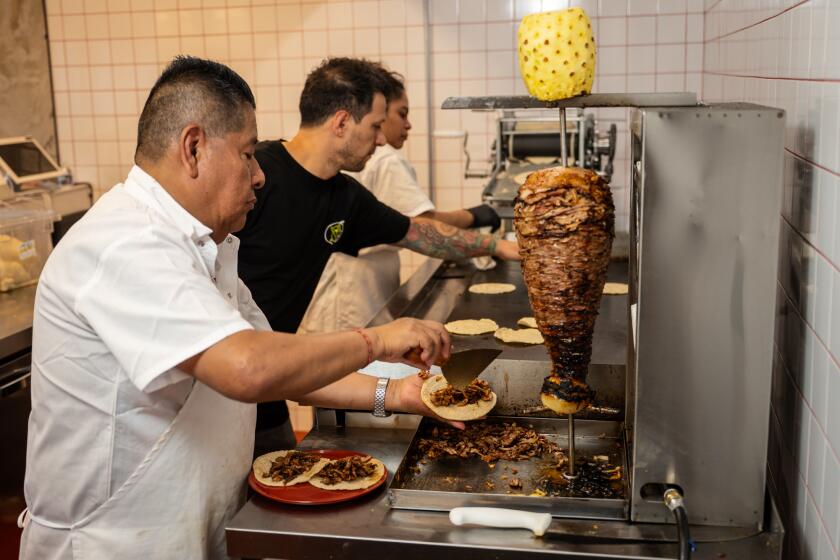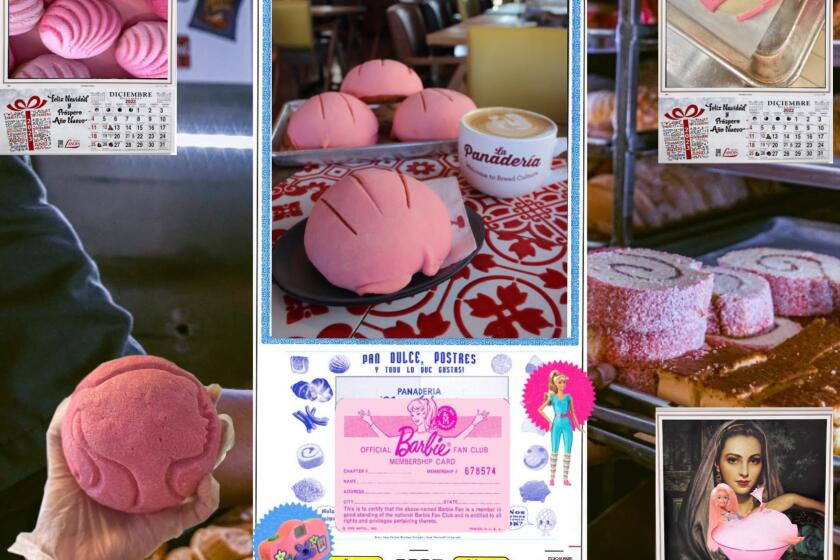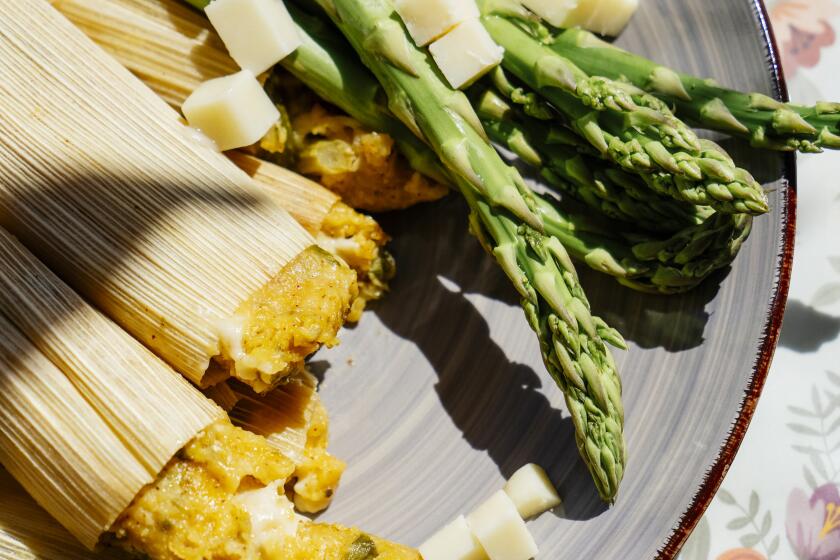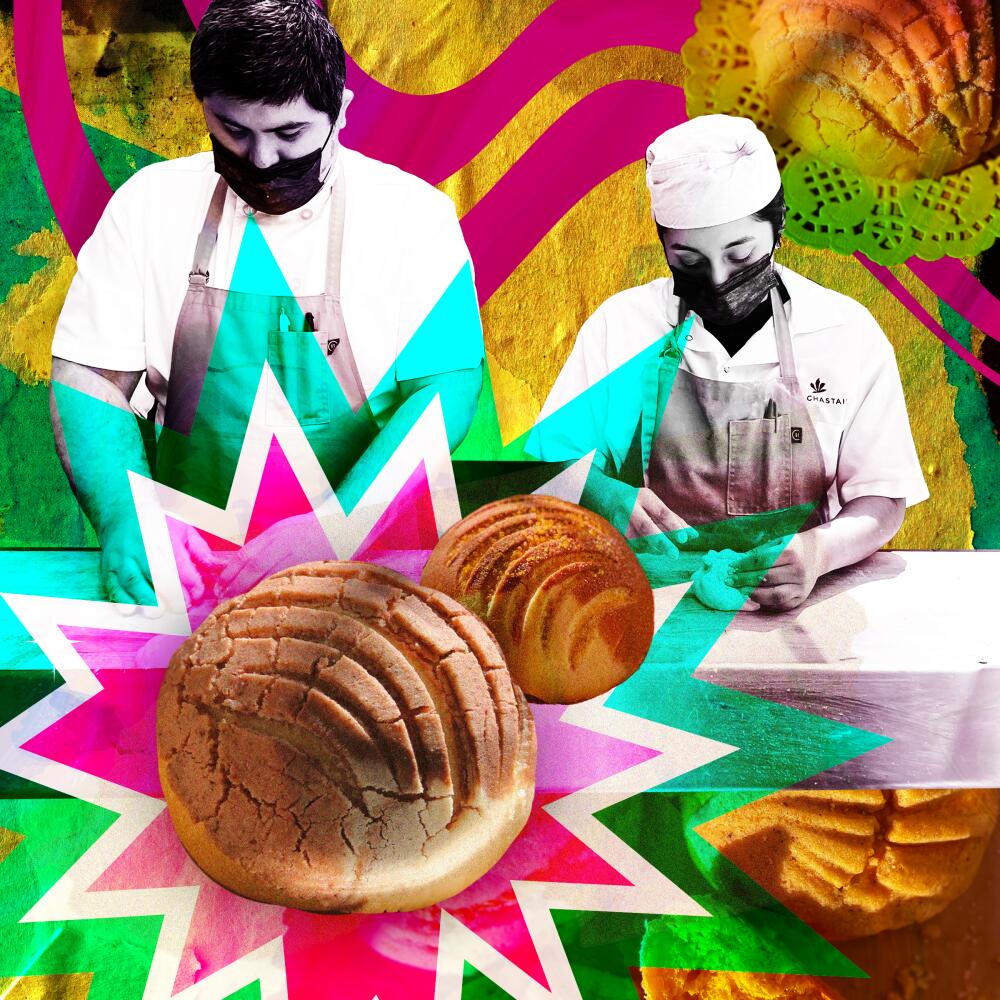
Named after its shell-like appearance, la concha is the quintessential pastry of Mexico and has now become a symbol of Latinidad across the U.S., and sometimes in corners you might not imagine, like the South. There are over 2,000 variations of pan dulce, but the soft bread bun topped with sweet cookie-like dough is popular for a reason.
Driving by million-dollar mansions in the heart of Atlanta’s Buckhead neighborhood — what many call the Beverly Hills of the South — right across from Atlanta’s third largest park sits the Chastain.
For Chicanos in particular, the sweet treat has become a mascot. But what is it about the concha that has elicited such fanfare?
“These are the best conchas I have had since Mexico,” said Daniel Guevara, who drives two hours to get his hands on one. “I would have never imagined to find it here and by an Argentinian chef.”
It might not be your typical panaderia, but when on the menu, la concha at the Chastain is the star.
“We make it because me and my team want to share our Latin culture and flavors,” said Christian Castillo, executive pastry chef at the Chastain. “It makes me and my team so proud of our roots.”
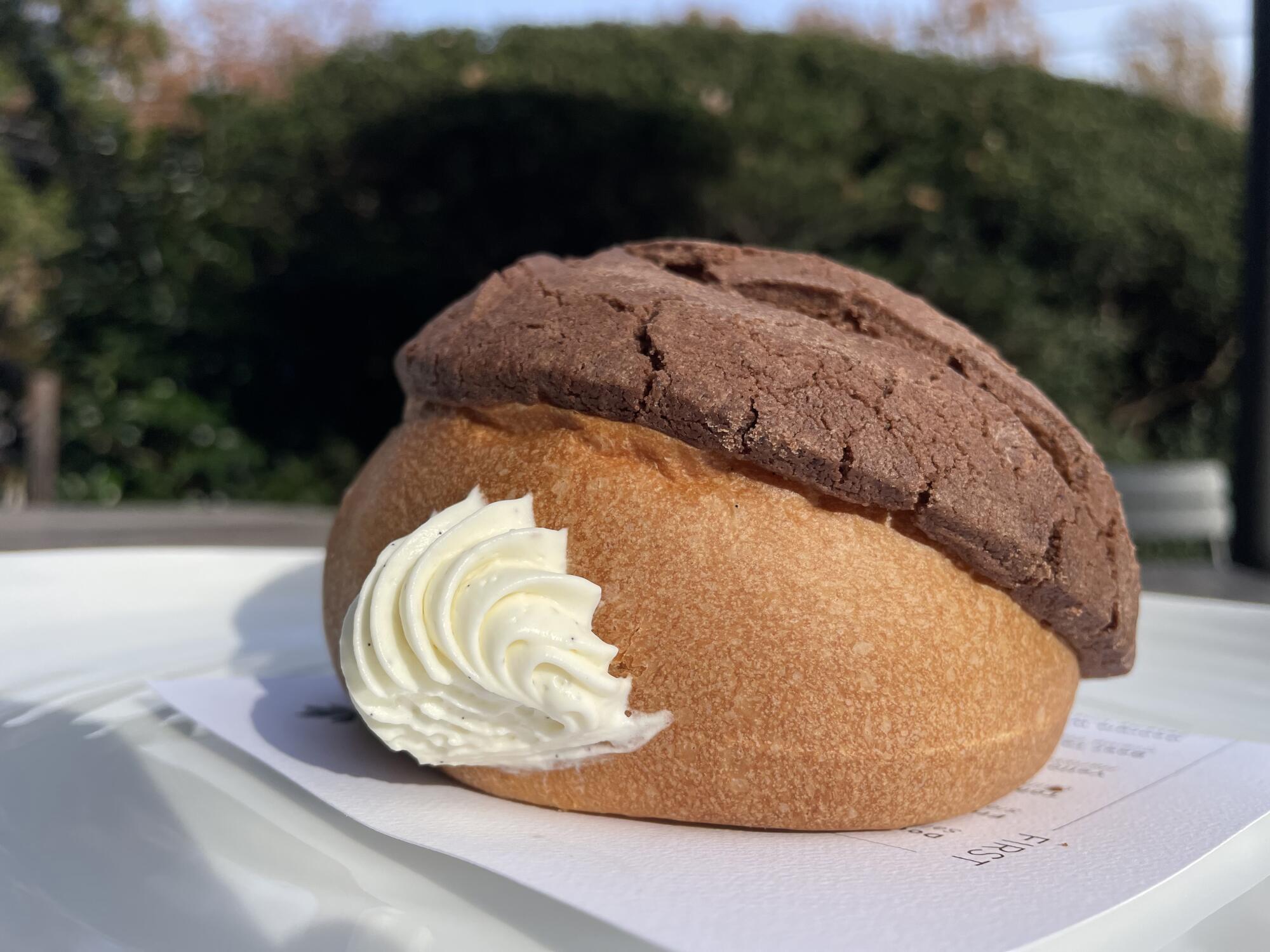
Covered with a chocolate-flavored cookie on top, Castillo has decided to elevate the experience of his favorite Mexican pan dulce by stuffing it with a chocolate coffee cream that promises to get all over your fingers when biting into it.
Living in the U.S. as a native Argentinian, Castillo thought he knew Mexican food until he actually went to Mexico. “I used to think that conchas were dry with a lot of coloring,” said Castillo, based on his experience in the U.S. over 10 years ago. But when he walked into a panaderia in Mexico and took a bite of a concha, he quickly changed his mind. “I tasted the softness in the perfectly baked brioche-like bread,” he said. “And it was impossible not to fall in love.”
Mexico shaped Castillo’s approach to baking. He uses many of the flavors, ingredients and techniques from Mexican cuisine, including the pan dulce. When he became executive pastry chef at the Chastain, he and his diverse team of bakers decided to put Latin pastries on the menu, using the best ingredients.
“It’s important to me that people know that our Latin community has excellent pastries,” said Castillo. “It’s not all European. Latinos have it, too.”
In places like Atlanta, where Latinos make up a smaller percentage of the population, tacos are in high demand but traditional taqueros are scarce.
While the concha is as Mexican as the taco, it has deep-rooted ties to Europe. In the 17th century, during the colonial era, French bakers arrived in Mexico, bringing along the brioche, baguette and other European recipes and techniques.
Brioche, a soft, lightly sweet, rich bread, is believed to be the base of la concha but elevated with indigenous ingredients in some of its variations, such as using lard instead of butter.
Making a concha is not an easy task. The elaborate process can take up to 48 hours, with much waiting and dough-babysitting in between.
“I let the dough rise and proof slowly overnight in the fridge for a more complex tasting concha,” said chef Teresa Finney, recipe writer, baker and owner of At Heart Panaderia in Atlanta. “The dough is an enriched dough, meaning in addition to flour, there are eggs, butter and milk present.”
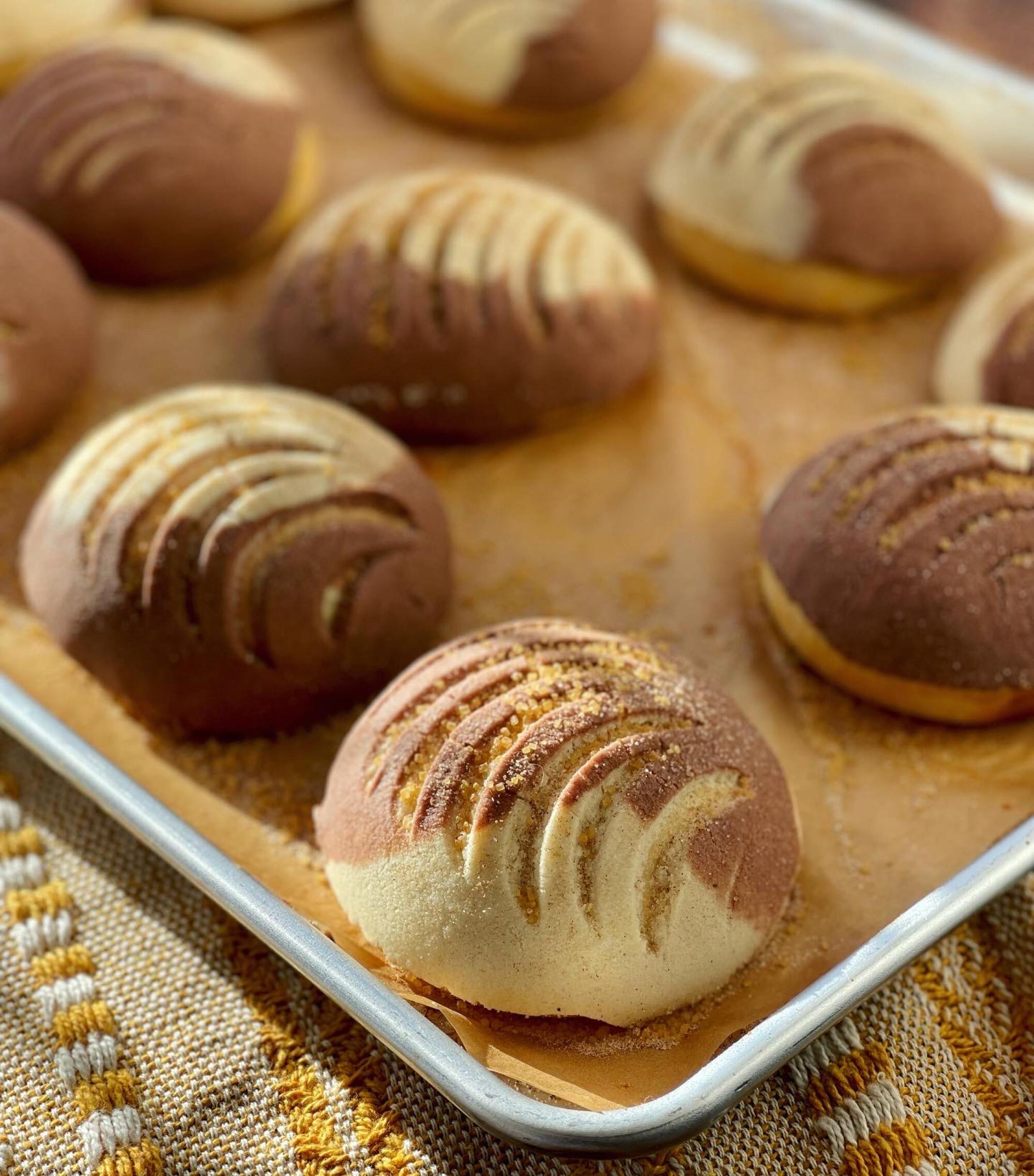
Once the dough is proofed, it is portioned into the desired size and shape of the concha — which is traditionally round, although some have experimented with heart-shaped conchas.
As one of the last steps, the dough is topped with the popular sweet cookie. Some pastry chefs prefer to cut the cookie into its traditional seashell pattern before placing it on top of the concha, and others put the cookie over the dough and artistically score it.
“They are time-consuming,” said Finney, who offers conchas year round in a menu that seasonally changes. “Sometimes I feel like I’m still learning how to make them.”
The granddaughter of paternal Mexican grandparents from Guadalajara who immigrated to Los Angeles in the 1950s, Finney grew up embedded in the Mexican culture in California. “Growing up, it was all about the culture,” she said. “We ate Mexican food primarily, obviously, and of course, lots of pan dulce.”
In 2015, Finney moved to the South, and conchas and pan dulce became a way to cope “with an engulfing sense of homesickness,” she said. “[I] just wanted to feel closer to my family since in 2020 I wasn’t sure when I would be able to see them again.”
It was then that her Georgia-based micro-bakery and pan dulce pop-up came to life.
In anticipation of the new “Barbie” film release this weekend, bakeries across the country have created a new type of Barbie to consume: a traditional Mexican concha.
“Living in Georgia taught me about seasonal eating and the beauty of one season ending to make way for another season to begin,” said Finney. “The U.S. Southeastern seasons inform basically all that I do now at the bakery.”
In the spring, when strawberries start to grow in Georgia, the At Heart Panaderia’s menu includes a strawberry and sumac concha. Sweet potato conchas come in the fall, and a plum or stone fruit jam-filled concha becomes a crowd favorite in the summer.
Social media has taken the spin-offs of the concha to a new level, including the croncha (a croissant concha), concha ice cream sandwiches, concha muffins, concha bread pudding, and even giant conchas big enough for a family of 10.
Amid all the concha trends, El Tesoro leads the way in Atlanta with the torta concha.
“One of my favorite things about going to Mexico City is the insane tortas on the streets,” said Alan Raines, owner of El Tesoro in Atlanta. “I still remember my first [torta] and thinking, what is this madness?”
As the name notes, torta concha is a combination of a torta and a concha. The concha, sourced from a local Mexican store, is sliced open horizontally and seared on the plancha with queso Chihuahua, then stuffed in a sandwich-like manner from bottom to top with refried beans, beef barbacoa, guacamole, salsa verde, pico de gallo, lettuce and sour cream.
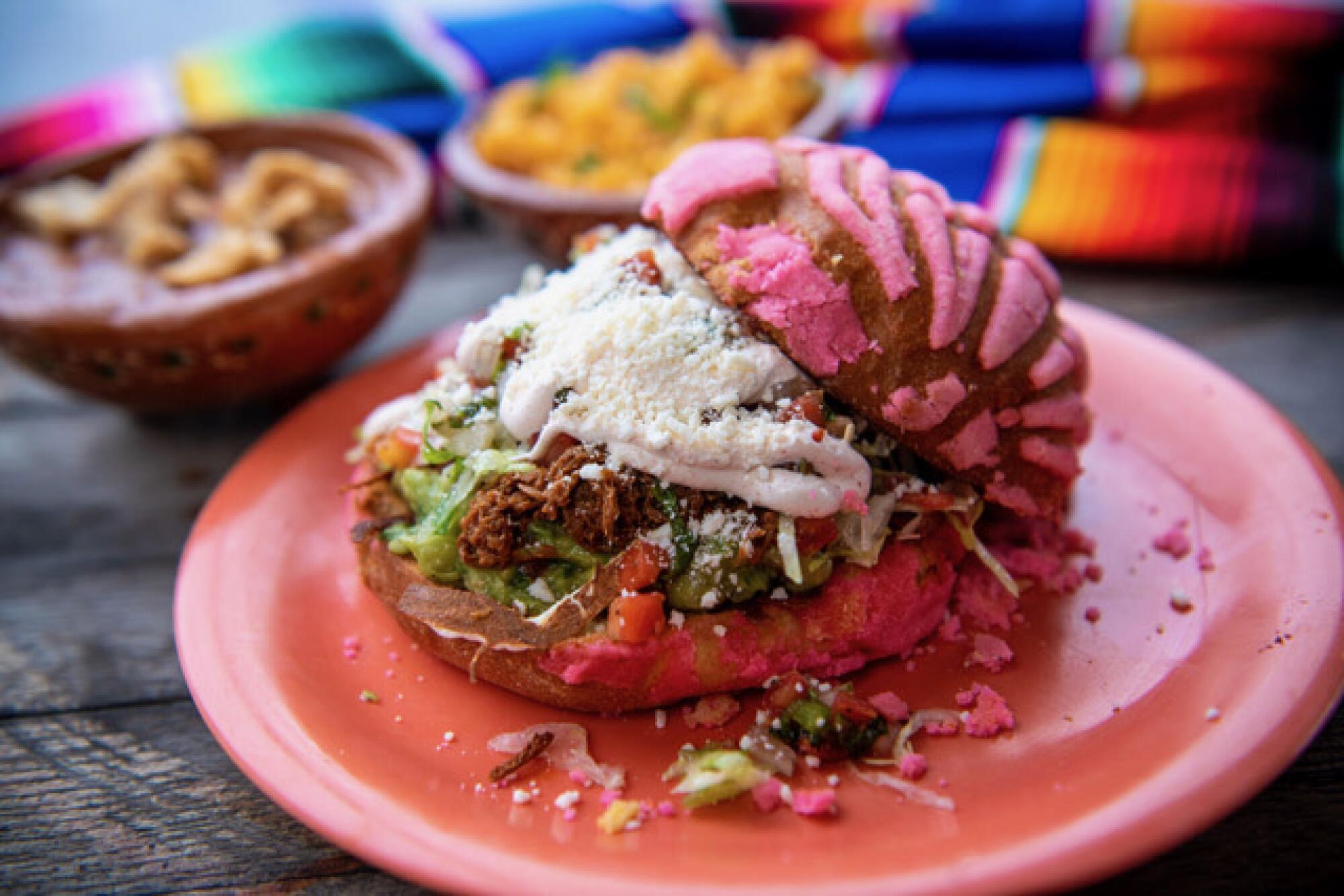
“I wanted to go all out and blow people’s minds with the balanced combination of what seemed like a kitchen sink kind of sandwich,” said Raines.
The concha at El Tesoro is sourced from a local Mexican store, and the barbacoa is seasoned Guerrero style and braised for hours to achieve tenderness.
“The real reason the torta works, like everything we do, is because of each individual ingredient,” said Raines. “Just like each of our kitchen staff is an individual ingredient in our menu success. It never ceases to amaze me.”
El Tesoro is a neighborhood rustic restaurant with an outside-only dining room that comes nothing short of one you would find in rural Mexico. It’s no surprise that the torta concha hits home. It might be a trendy variation of the concha, but its flavors are authentic sabores de Mexico.
The influence of the concha goes beyond food.
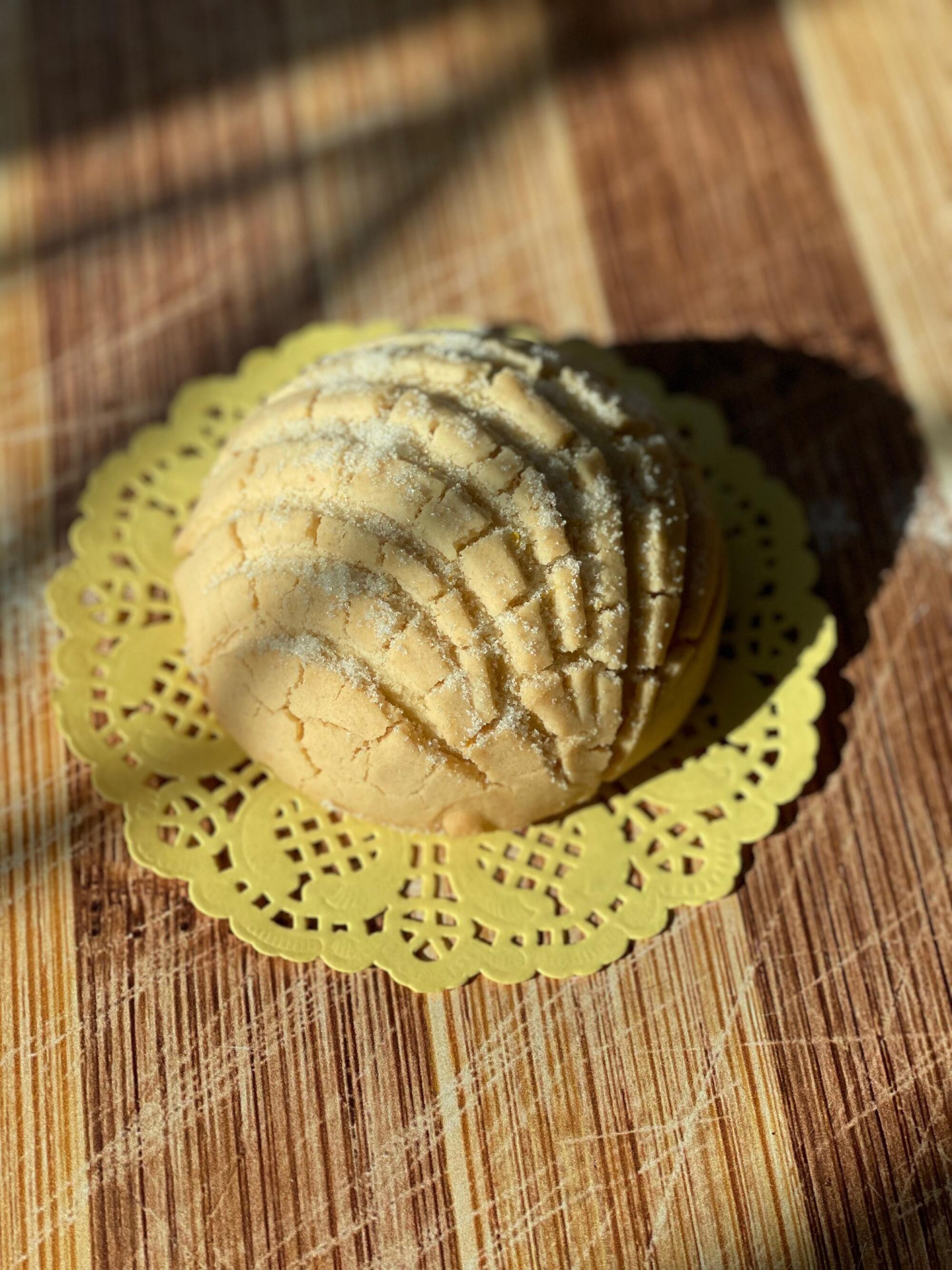
“Conchas are extremely close to my heart,” said Yesenia Velazquez, owner of Celi Studios, who grew up in Mexico but moved to the U.S. at age 11. She might not be the best baker, but she is a talented artist who connects people to their childhood memories through concha-inspired jewelry in Atlanta.
“When I see the expression and excitement of a girl to my concha set, it’s seriously the best feeling because I can see it probably means the same to her — a sweet reminder of childhood,” she said.
Recently, the Yakima Valley has received some attention because of the impressive rise of local band Yahritza y su Esencia.
The nostalgia of a concha is sometimes also reflected in the stroke of a brush. “My father made pan dulce from time to time. Conchas were my favorite to help make, and those are some of the better memories of my childhood,” says Christian Limon, Mexican artist and founder of Kuali Galery in Atlanta. Over the years, he has featured conchas in at least eight paintings. “Painting conchas is a way to honor my Mexican heritage and also a way to honor my childhood.”
Whether they are sold at a panaderia recién hechas (freshly baked), in a fancy coffee shop, stuffed with flavorful meat, or at a festival as earrings, conchas are a nostalgic symbol of Latinidad, family and home — wherever that is, even in the South.
Daniela Cintron is a Mexican-born bilingual journalist whose work focuses on telling the stories of underrepresented communities. She is based in Atlanta and pursuing a master’s degree at Harvard. @danicintron
More to Read
The Latinx experience chronicled
Get the Latinx Files newsletter for stories that capture the multitudes within our communities.
You may occasionally receive promotional content from the Los Angeles Times.

